Whitehot Magazine
November 2025
"The Best Art In The World"
"The Best Art In The World"
November 2025
Jerónimo Rüedi's Intellectual Painting
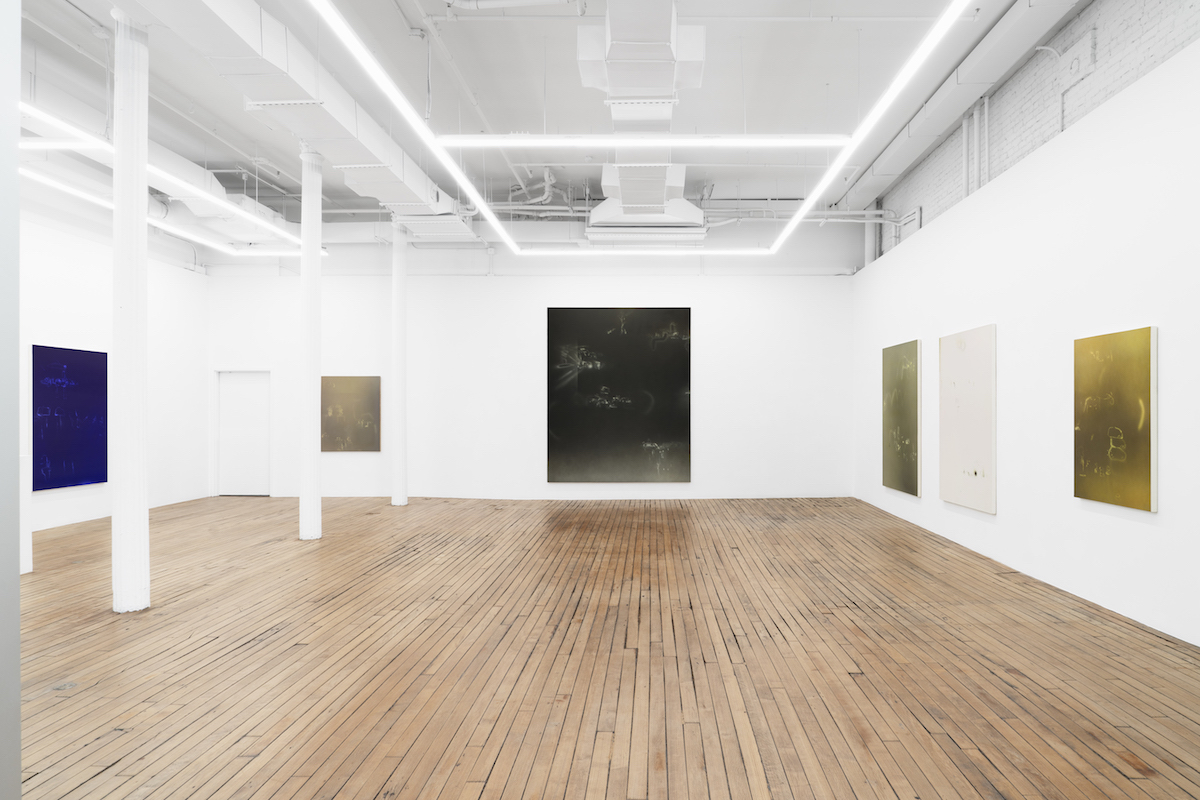 Jerónimo Rüedi, “Preans”, exhibition installation view Bureau, New York
Jerónimo Rüedi, “Preans”, exhibition installation view Bureau, New York
By EDWARD WAISNIS October 19, 2025
“There is no classification of the universe that is not arbitrary and full of conjectures”
– Jorge Luis Borges
Jerónimo Rúedi’s octet of new paintings, all created this year–with two additional works; one bathed in royal purple tones *–secreted away in the galleries subterranean tier–and comprising a first solo exhibition at the gallery (and in the States). The show represents the apotheosis of Rüedi’s quest for removing the vestiges of reference. Whether in the inherent objectlessness of painting itself (the physicality of surface, namely, the tooth of the support as well as the texture of the substance laid upon it) or, the explicitness of content.
Ascribed titles–from the exhibitions (Preaesns), to a lion’s share of the individual works, are tailored nomenclature coming out of the limbo of Rüedi’s multi-lingual/multi-national existence (he currently lives and works in Mexico City); as well as his compunctions, burnished by attendance at Escola Massana, Art and Design Centre, Barcelona, known for elevating intellectual attitude in art making and study. This yearning, in Rüedi’s case, led to that search for texture in order to serve the ethereal to maximum effect. While, perhaps, appearing radical this stance is, in fact, a long-held fallback to the last half century of painting.
Fellow countryman, eminence gris of literature, Jorge Luis Borges is reflected in the labyrinthian realms Rüedi plumbs, as well as his titling choices, supporting the thesis element of his formula; the Borgesian sense of blurriness that Rüedi is finely attuned to.
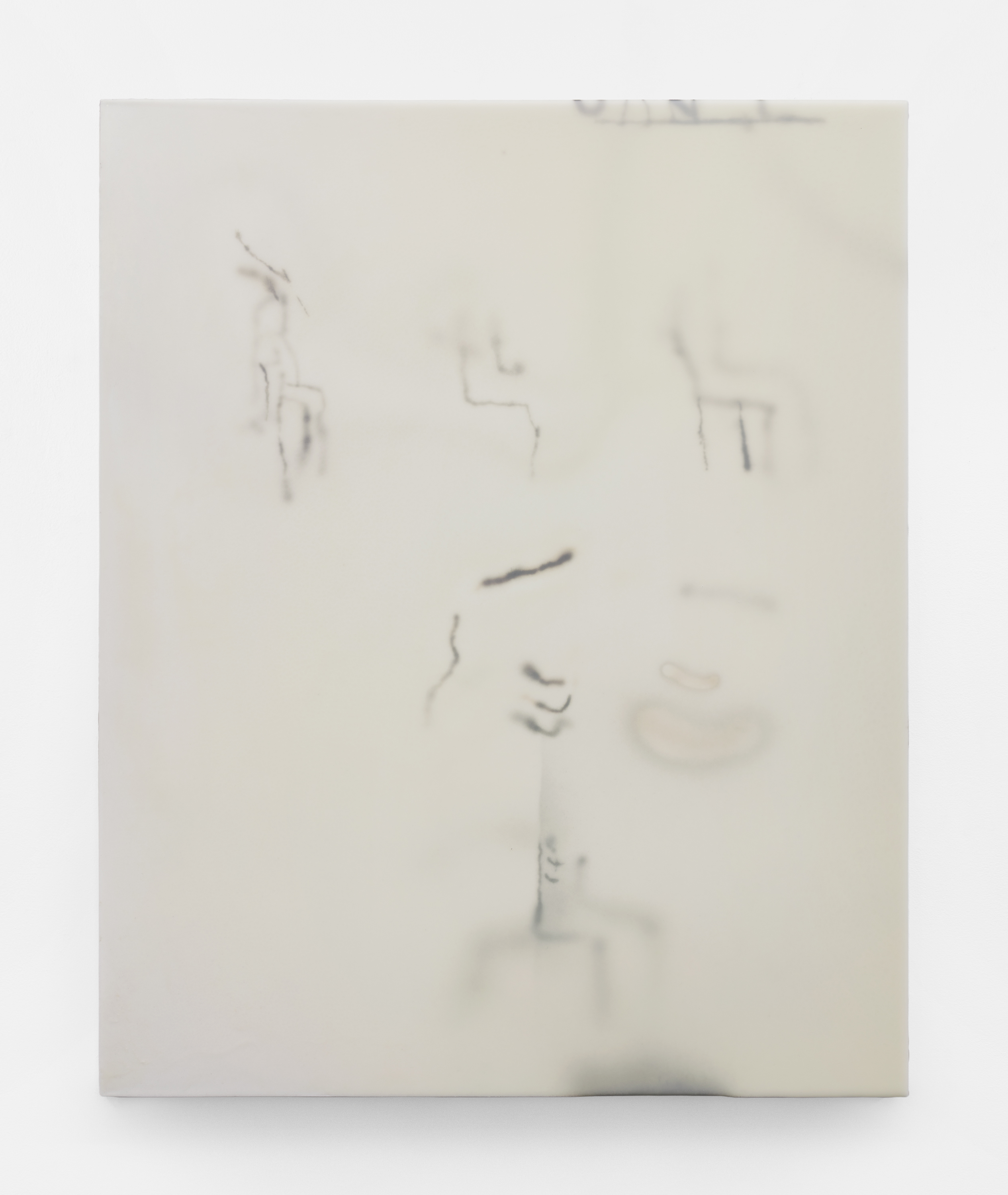 Jerónimo Rüedi, “Oirgn 01”, 2025, encaustic on aluminum mounted to wood, 23 ⅝ × 19 ⅝ in.
Jerónimo Rüedi, “Oirgn 01”, 2025, encaustic on aluminum mounted to wood, 23 ⅝ × 19 ⅝ in.
While air brush suits Rüedi’s intentions, two works, Oirgn 01 (tucked in a corner and kicking off the install) and the larger Whgos Theroy are encaustic laid down on aluminum. The non-porous metal support providing the ultimate slick incursions for Rüedi’s conceptual painting. I have to assume that these are the latest works, implying a new, or furthering of, direction?
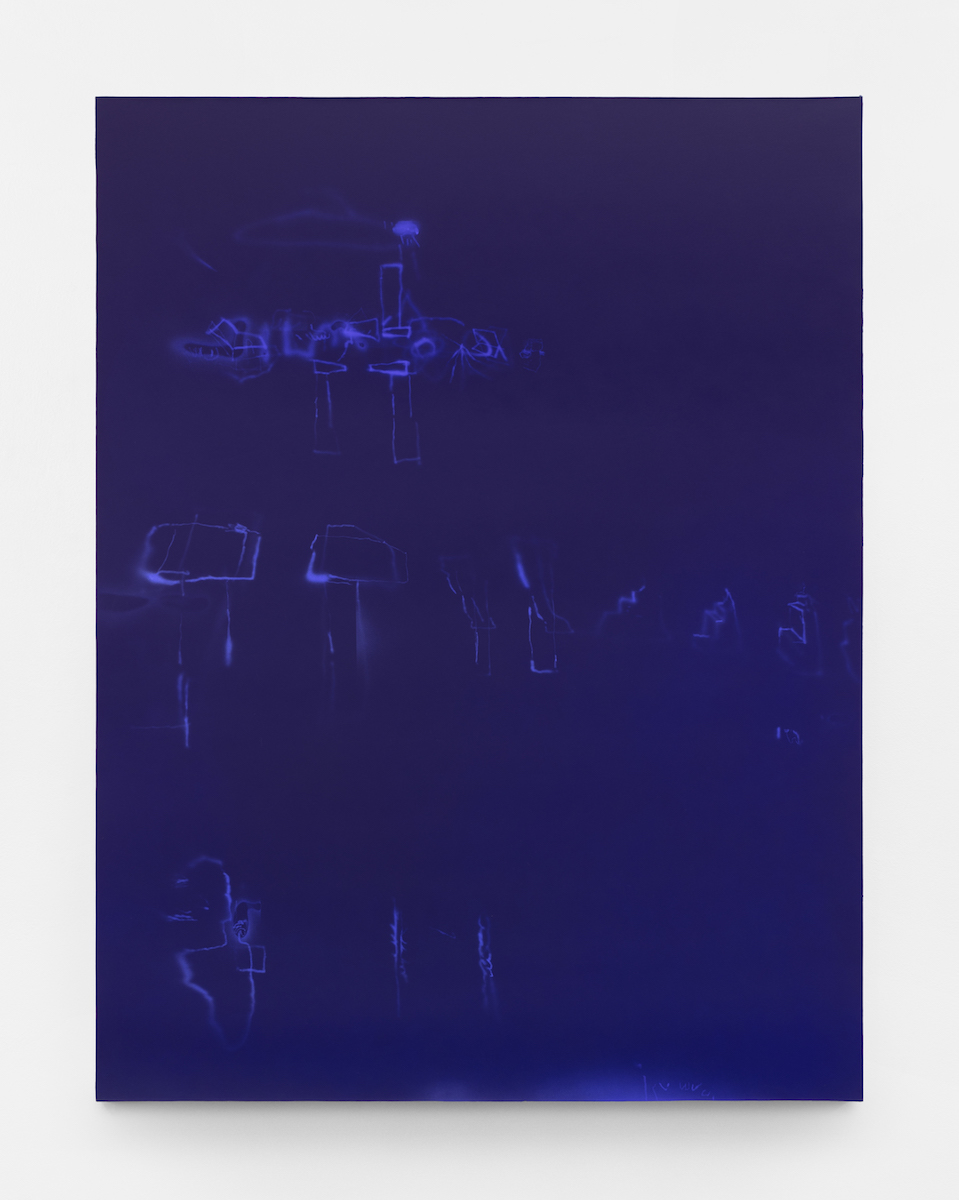 Jerónimo Rüedi, “Siegtemas”, 2025, acrylic on canvas, 66 ⅞ × 51 ⅛ in.
Jerónimo Rüedi, “Siegtemas”, 2025, acrylic on canvas, 66 ⅞ × 51 ⅛ in.
A predominate palette of earth and oxide, that coalesce into planes calling out the astropheric, or in the case of Siegtemas, the aquatic with its deep ultramarine sea expanse offering a sense of looking through a sheet of heavy lapis lazuli tinted stained glass. The view beyond strains longing, the inclination to ford through the inky depths in order to reach what could turn out to be phosphorescent deep sea creatures, or evidence of a gathering of extraterrestrial entities, turns up the compelling quotient. Counter to most of the other works in the show, that emit, this one absorbs–the gaze and the soul. Also standing out, here, is the similarity to the slate-board erasures of Gary Simmons (minus the cartoon references) with relation to the markings, especially given that the core of the work features ciphers closer to those produced by Cy Twombly and particularly, Brice Marden.
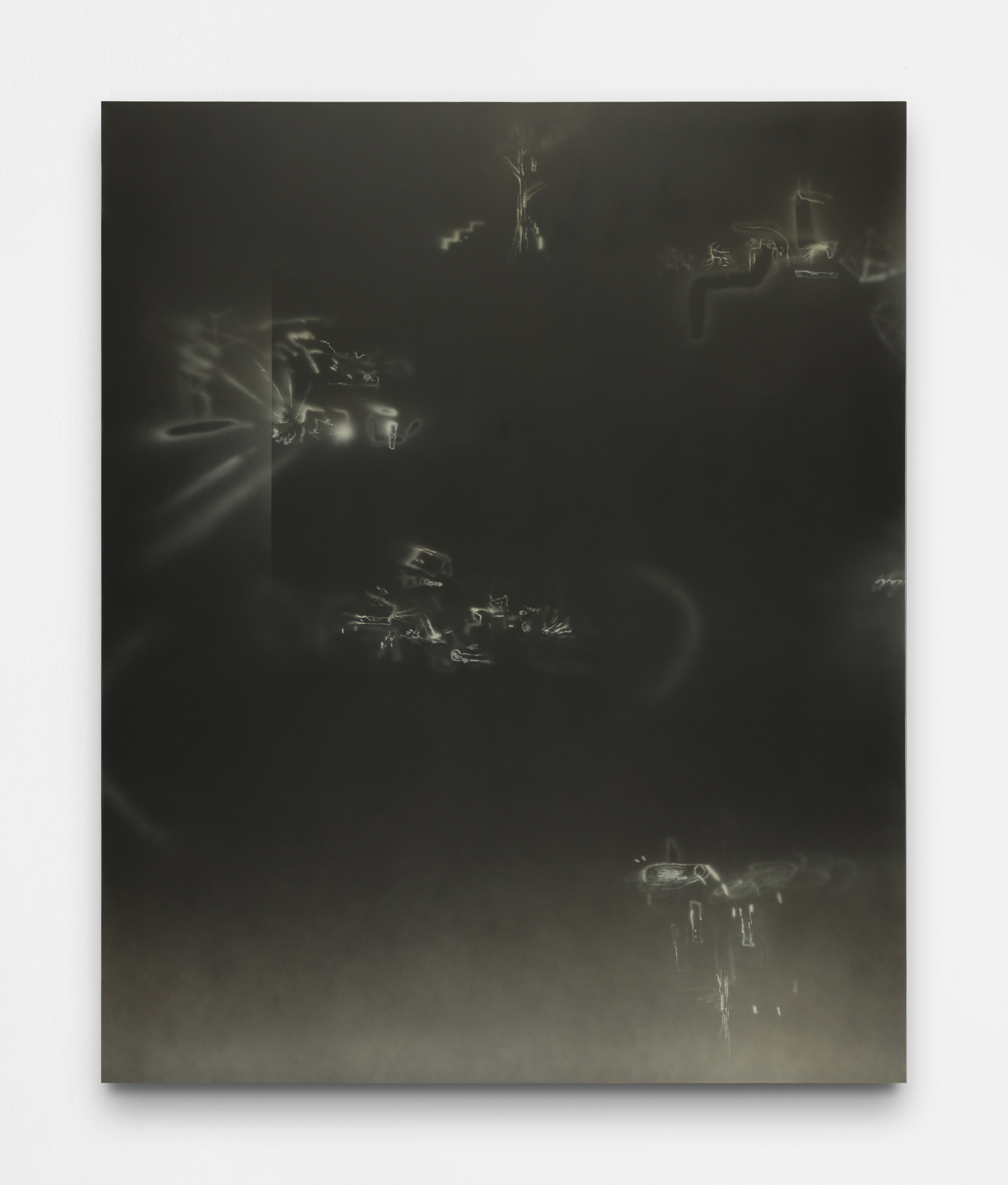 Jerónimo Rüedi, “We could doubt each of these facts, but we cannot doubt all of them”, 2025, acrylic on canvas, 110 ¼ × 90 ½ in.
Jerónimo Rüedi, “We could doubt each of these facts, but we cannot doubt all of them”, 2025, acrylic on canvas, 110 ¼ × 90 ½ in.
The overlay of a misty panel, running down the left side quadrant of We could doubt each of these, facts, but we cannot doubt all of them, mimicking a tautly-stretched sheer curtain enhances the comparison to Ad Reinhardt’s straining of sight in order to probe the darkness.
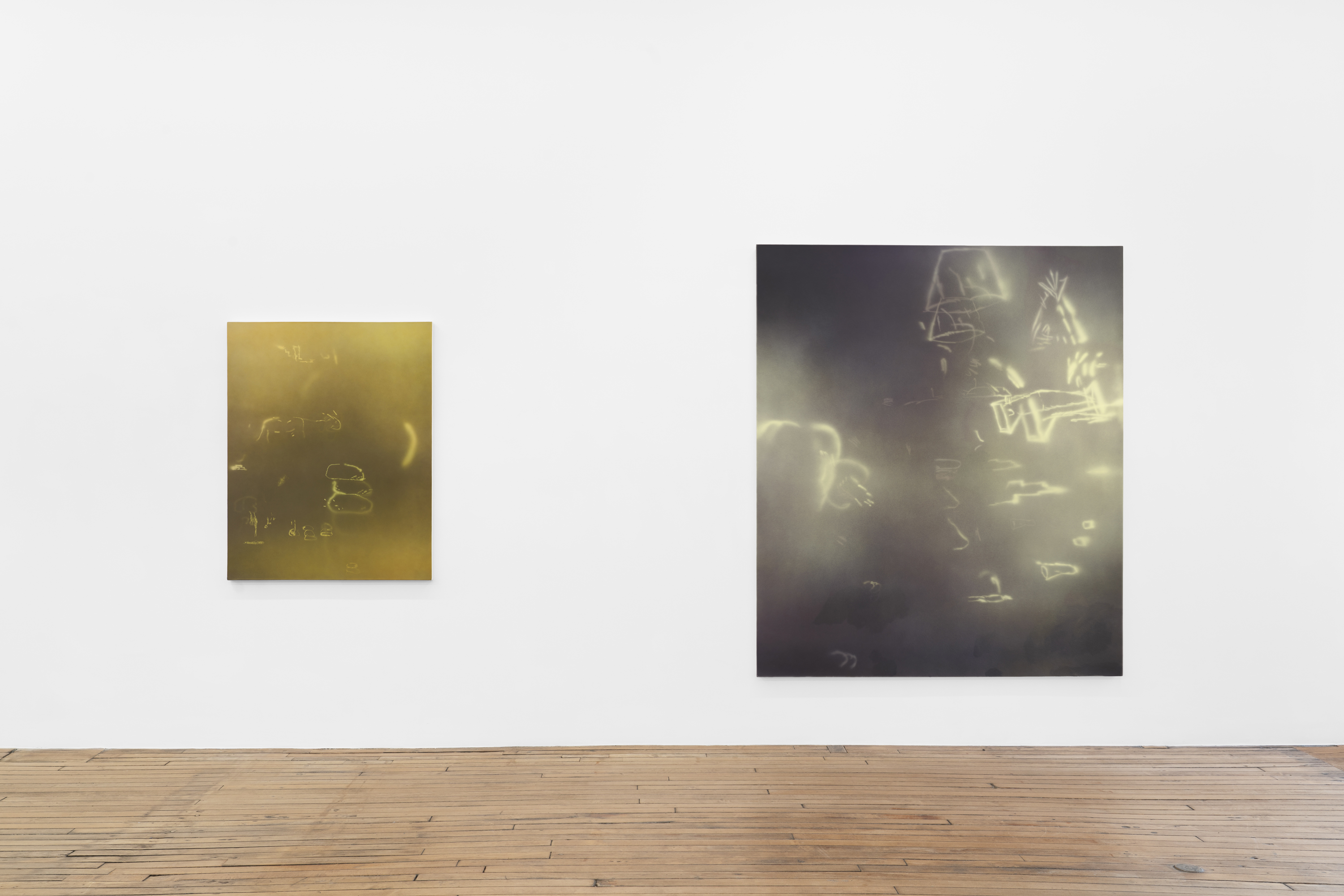 Jerónimo Rüedi: “Preans”, exhibition installation view, Bureau, New York, showing: “Aulcinnation”, 2025, acrylic on canvas, 47 ¼ × 37 ⅜ in. (left) and “Airady Aftrmah”, 2025, acrylic on canvas, 78 ¾ × 66 ⅞ in. (right)
Jerónimo Rüedi: “Preans”, exhibition installation view, Bureau, New York, showing: “Aulcinnation”, 2025, acrylic on canvas, 47 ¼ × 37 ⅜ in. (left) and “Airady Aftrmah”, 2025, acrylic on canvas, 78 ¾ × 66 ⅞ in. (right)
The nearly overpowering luminescence of Airady Aftermath bears strong resemblance to slow shutter images of drawing with light. A famous example being the capturing of Picasso conjuring neon linear constructions in the air. Rüedi similarly pierces the gloom with intensity.
As part of my research toward writing this piece I took a look at Rüedi’s film (video) Yanhuitlán † that accompanied his exhibition at Museo del Ex-Conventor de Yanhuitlán, Oaxaca. In this nine-and-a-half minute work, Rüedi takes a page from various forms of experimental film. From the plein air ramblings of Maya Deren and Ken Jacobs, to the autobiographic excursions of Stan Brakhage. As well as the categorizing structuralism of Hollis Frampton. The shivering hand-held shots pontificate on Rüedi’s draw to shadow territory sparked by Lite-Bright ®™ flourishes casting moments of clarity that may just be from a dimension not visible to the human eye. The traipsing around and through architectural and natural sites builds an austere poetry of the visuals. Augmentation by a ghostly score of foreboding casts one further into Rüedi’s interior-scape. Signature marks, as overlays, make sputtering cameo appearances, as overlays, from time to time.
Upon viewing the show, I flashed back to seeing Bleckner’s stripes at International With Monument, in the East Village of the 80s; and, further back still to encountering Larry Poons' lozenges in Emil deAntonio’s film Painters Painting, in the 70s. I tie these two reveries together due to the startling freshness of direction these artists, in these select given eras, my (and, I am sure many others) response.
Rüedi’s overriding sense of the qualities of alluring opulence laid over and emerging from arid fields sums up his practice; an admixture of matter and mind. In this sense, he fulfills the credo he has ascribed to.
__________________________________
* Dsinteration, 2025
† Post by Galerie Nordenhake and available on YouTube: https://www.youtube.com/watch?v=YnCLUjpNbFA
JerónimoRüedi: Preaesns
Bureau
112 Duane Street, New York, NY 10007
September 5–October 25

Edward Waisnis
Edward Waisnis is an artist and filmmaker. Additionally, he is the Producer of two Quay Brothers films, Through the Weeping Glass and Unmistaken Hands, as well as having overseen the facilitation of their 2012 MoMA retrospective. His writing has appeared in Art New England, COVER, ARTextreme and STROLL.
view all articles from this author








